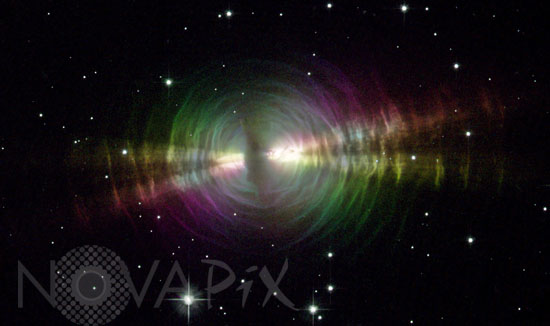Photo Agency - Astronomy - Space - Nature

Protoplanetary nebula CRL 2688
author: Nasa/Hubble heritage team/Novapix
reference: a-nep98-00101
Image Size 300 DPI: 14 * 8 cm
Hubble's Advanced Camera for Surveys has polarizing filters that accept light that vibrates at select angles. In this composite image, the light from one of the polarizing filters has been colored red and only admits light from about one-third of the nebula. Another polarizing filter accepts light reflected from a different swath of the nebula. This light is colored blue. Light from the final third of the nebula is from a third polarizing filter and is colored green. Some of the inner regions of the nebula appear whitish because the dust is thicker and the light is scattered many times in random directions before reaching us. (Likewise, polarizing sunglasses are less effective if the sky is very dusty). By studying polarized light from the Egg Nebula, scientists can tell a lot about the physical properties of the material responsible for the scattering, as well as the precise location of the central (hidden) star. The fine dust is largely carbon, manufactured by nuclear fusion in the heart of the star and then ejected into space as the star sheds material. Such dust grains are essential ingredients for building dusty disks around future generations of young stars, and possibly in the formation of planets around those stars. The Egg Nebula is located 3,000 light-years away in the constellation Cygnus. This image was taken with Hubble's Advanced Camera for Surveys in September and October 2002.
Contact : Stéphane Aubin +33-(0)9-51-26-53-76
© Novapix - All rights reserved


